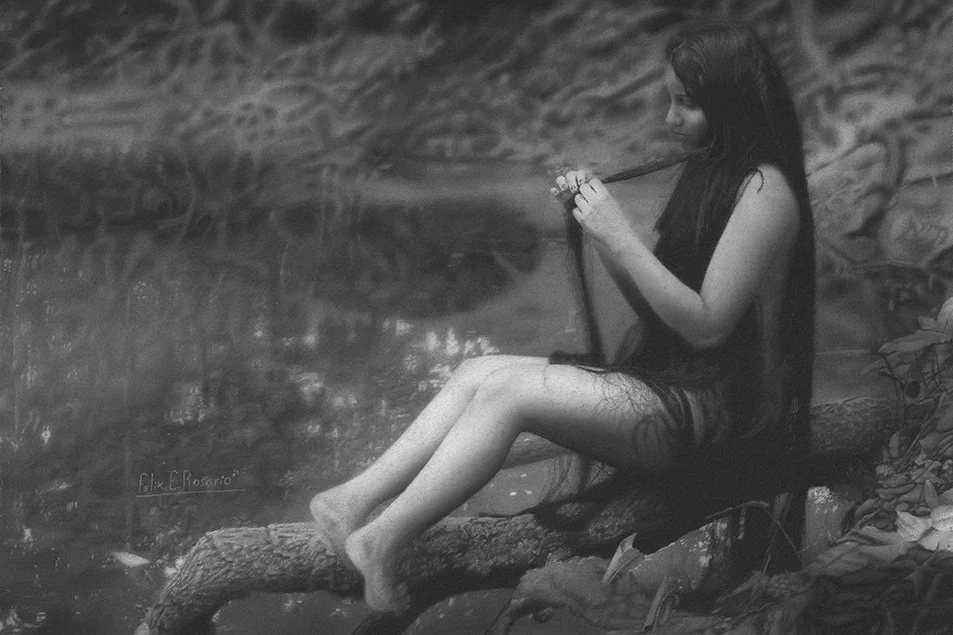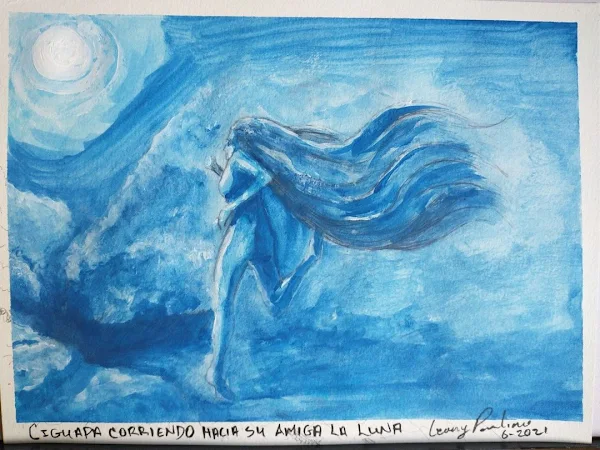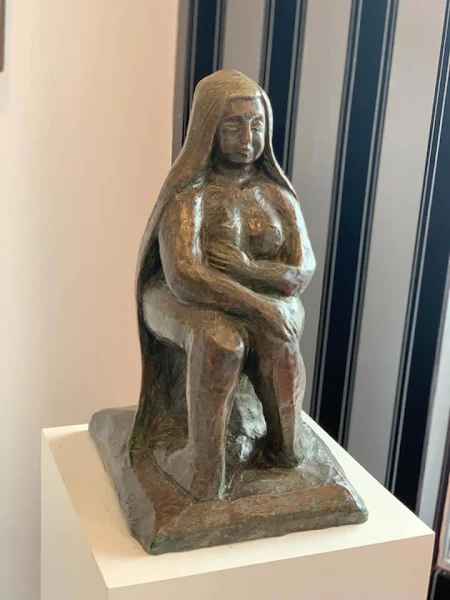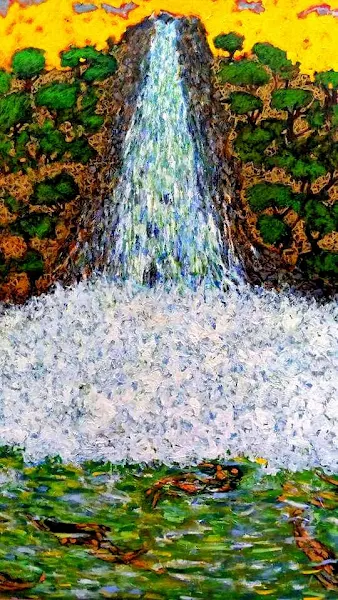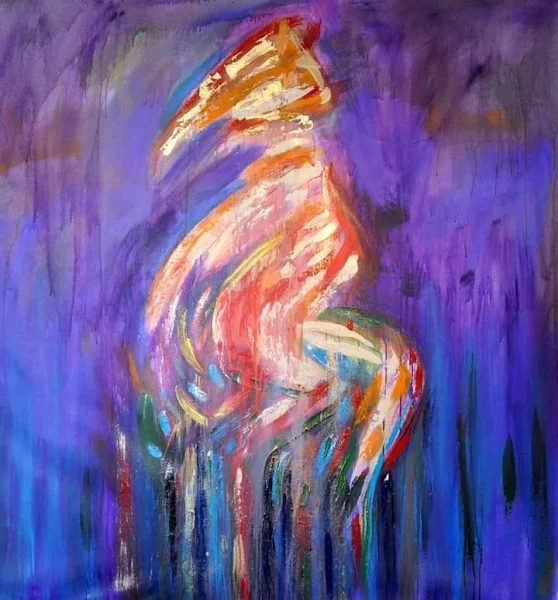La Ciguapa – The Woman with Backwards Feet
The true story of the woman with Backwards Feet
For over a century, stories have been passed down of a creature that lurks within the shadows of the wooded mountainous regions in the Dominican Republic. A feral woman with long dark hair and backwards feet that preys on lonely farmer while he harvest the cacao or the would-be adventurer in search of new routes. Young boys and girls are warned against venturing out into the woods alone with stories of this ravenous creature that feeds on the flesh and souls of men.
Those that survive have described a stillness in the area, as if birds, insects and land animals had been frightened away. Followed by soft whispers and howls that flowed with the gentle breeze and echoed through the canopies. The calling draws you in from all around until the creature finally reveals itself. A fair maiden, standing no higher than a meter, but with a “harmony in all its muscles and limbs.” Large, dark and enchanting almond shaped eyes. Hair black as midnight, but with a luster that glows with the moonlight. Thick and long, and draped on her body to ankle length.
This is the legend of La Ciguapa. A creature of Dominican folklore that today is still told at the bedside of many children. Such is its popularity, that many, especially in the rural areas of the country, still claim the tale as true. The most revered (and terrifying) of the ciguapa storylines, describes a demon which lives in deep caves and lures lonely men with her beauty and sensuality. Ensnaring the victim in a hypnotic stare and leading them back to her dwelling where she consumes them to the bare bones, or traps them forever for her carnal pleasures.
But there is also a story that describes a timid creature that quickly disappears if they sense people about. A lonely girl that sleeps in the tree tops and feeds on fruits, birds, fish and other small animals. A creature that is said to be a descendent of a race of small people that lived within secluded mountains long before the first indigenous people crossed over into the Greater Antilles. This is the story that first introduced the legend of ciguapas in the Dominican Republic, in a novel by Francisco Guridi, first published in 1866.
It should be noted that, some sources have claimed the ciguapa as a legend that has been passed on since the time of the Taino Indians of Quisqueya. But according to sociologist Ginetta Candelario, “the ciguapa is not a legend of Taíno origins that predates Spanish colonialization of the island.” Making Guridi’s short story the first introduction of the character into Dominican folklore.
Francisco Javier Angulo Guridi (Santo Domingo, December 3, 1816 - San Pedro de Macorís, December 7, 1884), was a poet, novelist, essayist and playwright. He was educated at the Royal College of San Francisco, in Cuba, where he lived from a young age (1822 - 1853), and founded a newspaper called “La Prensa” in 1836. In 1843, he published his first collection of poems, “Ensayos poéticos.” He returned to his native Santo Domingo in 1853, moving back to La Habana one year later where he published his novel “La fantasma de Higüey,” in 1857. Guridi once again returned home and settled in Santiago de los Caballeros in 1860, where he launched a local newspaper, and in 1866 published several works, among them La Ciguapa.
In La Ciguapa, Guridi narrates the title character as follows:
"It is said that since before the Discovery of this Island there exists a race whose residence has always been the heart of these mountains; but it is preserved in all its purity, sleeping in the crowns of cedars, and feeding on river fish, birds and fruit. The Ciguapa, which is the name by which it is known, is a creature that only rises a rod in height: thoug it should not be believed that in its proportions there is the deformity of the so-called dwarfs in Europe and America. Far from it, there is an exact harmony in all her muscles and limbs, a wonderful beauty in her face, and an agility in her movements so full of spontaneity and grace that she leaves the one who sees her absorbed. She has the bronze skin of the true Indian, the black and slanted eyes, the soft, luscious and abundant hair, that rolls down the backs of female to the very calf. The Ciguapa has no other language than the howl, and runs like a hare through the mountains, or leaps like a bird through the branches of the trees as soon as it discovers another being other than its race; because she is extremely shy and harmless at the same time. In general, she is attributed a sensitivity without example, and it is added that having captured it sometimes through open traps in the forests, she has been seen to die within a few hours from the pain, drowned in her own crying; but without exhaling a single complaint, let alone revealing indignation."
In Guridi’s short story, a young couple had gone down to the river to fetch some water and were spied by a male ciguapa. Three days after the encounter the girl that had witnessed the ciguapa dies. In this story, the ciguapa is not a flesh eating demon that can hypnotize it’s victim. It’s a shy creature that gets consumed by jealousy whenever he/she encounters a person of the opposite sex. This jealousy creates a connection (male ciguapa with woman, female ciguapa with man) that later leads to the death of the two connected beings.
"Her jealousy ends with death... when it is the female ciguapa that surprises such, the male lover dies at the same time as the ciguapa, when it is a male ciguapa the female lover dies, as did my poor Marcelina."
That is the basic scenario in Guridi’s short story. A very different telling from what today is a story of a freighting creature with backwards feet. And although the backwards facing feet is considered the ciguapa’s most defining feature, Guridi never describes his character as having backwards facing feet in his original short story.
Artwork Depicting La Ciguapa by Dominican Artists
The backwards feet of ciguapas is an adapted feature which has a long history in ghost stories told in other parts of the world. In Hindu mythology, the Bhoots (male) and Churel (female), are ghosts which can take on human form and can only be recognized by its backwards facing feet. In many other myths throughout the world, ghost-like characters and forest dwelling creatures have at times been described with odd features such as backwards feet, rotating heads or some other odd physical anomaly. Features which would usually reveal the ghost or creature as non-human.
This practice of borrowing elements from old tales to implement into new stories is very common in literature. When we compare the storylines told today with Guridi’s original, we can come to the conclusion that the modern ciguapa story has adapted many elements from other folktales, including nymphs, elves, ghosts, witches and the succubus.
Stories of the Succubus, a female demon that takes human form and seduces men, can be found in variations throughout the world. One origin of the succubus legend is traced back to the Second Alphabet of ben Sirach, and the story of Lilith, Adam's first wife.
Lilith, unlike Eve, was created from the earth, just like Adam. But unlike Adam and Eve, Adam and Lilith were more comparable to modern couples. Lilith viewed herself as an equal to Adam and demanded equal treatment.
"...She said, 'I will not lie below,' and he said, 'I will not lie beneath you, but only on top. For you are fit only to be in the bottom position, while I am to be in the superior one.' Lilith responded, 'We are equal to each other in as much as we were both created from the earth.”
This story of Lilith ends with her becoming a demon that causes sickness to male infants for eight days after their birth. The story eventually evolves into a vengeful spirit that hunts and kills lonely men. As with the ciguapa, which evolved from a timid creature whose very nature creates a fatal link, into a terrifying creature with a startling deformity that hunts and kills lonely men.
Like the ciguapa and succubus, stories of vengeful female spirits and female creatures that kill lonely men have evolved into folktales adapted in different variations, based on the region.
The Sihuanaba, a demon that can change forms at will, is a common story told through Central and South American countries. Like the Ciguapa, the Sihuanaba is also known for its long hair and beauty. The lonely men unlucky to encounter a Sihuanaba, are lured into following a girl that giggles while only showing her back. When the Sihuanaba finally turns around, she reveals her face to be either a skull or the head of a horse. A clear resemblance to the modern story of ciguapas.
La Sayona is a "the vengeful spirit of a woman that haunts men that have love affairs out of their marriages." Another variation of La Sayona is La Llorona. This legend is also prevalent throughout North and South America, but used to scare children that misbehave. The story of "La Llorona" likely evolved from the Lamia, a child-eating demon of Greek Mythology.
These recurring similarities, such as vengeance, striking features, sexual nature, and only appearing when someone is alone, are common themes found in folklore around the world. But like many of these folktales, there is some truth to the many most striking themes in La Ciguapa. Guridi’s character has many similarities to pygmy peoples of Africa and other regions, which are primarily found living close to jungles and wooded areas, and whose average height is “usually less than 150 cm (4 ft 11 in) tall.”
In regards to the backwards facing feet, this can be a feature inspired by a very common condition named talipes equinovarus. Also known as clubfoot. It’s a “condition in which a newborn’s foot or feet appear to be rotated internally at the ankle... In severe cases, the foot may look as if it is upside-down.” If left untreated, the feet can eventually flatten out and appear to fully rotate as if the person had been born with backwards facing feet.
Inspiration for backwards feet could also come from the condition Genu recurvatum, "a deformity in the knee joint, so that the knee bends backwards. In this deformity, excessive extension occurs in the tibiofemoral joint. Genu recurvatum is also called knee hyperextension and back knee."
This breakdown of the origin of this mythical character is not meant to lower the importance of this folktale in Dominican culture. It is meant to inform the reader of the historical connection that the ciguapa shares with other important myths from around the world. And regardless of your take on the legend of a feral woman with long hair and backwards feet, folklore or true, the Ciguapa remains an important icon in Dominican culture.
